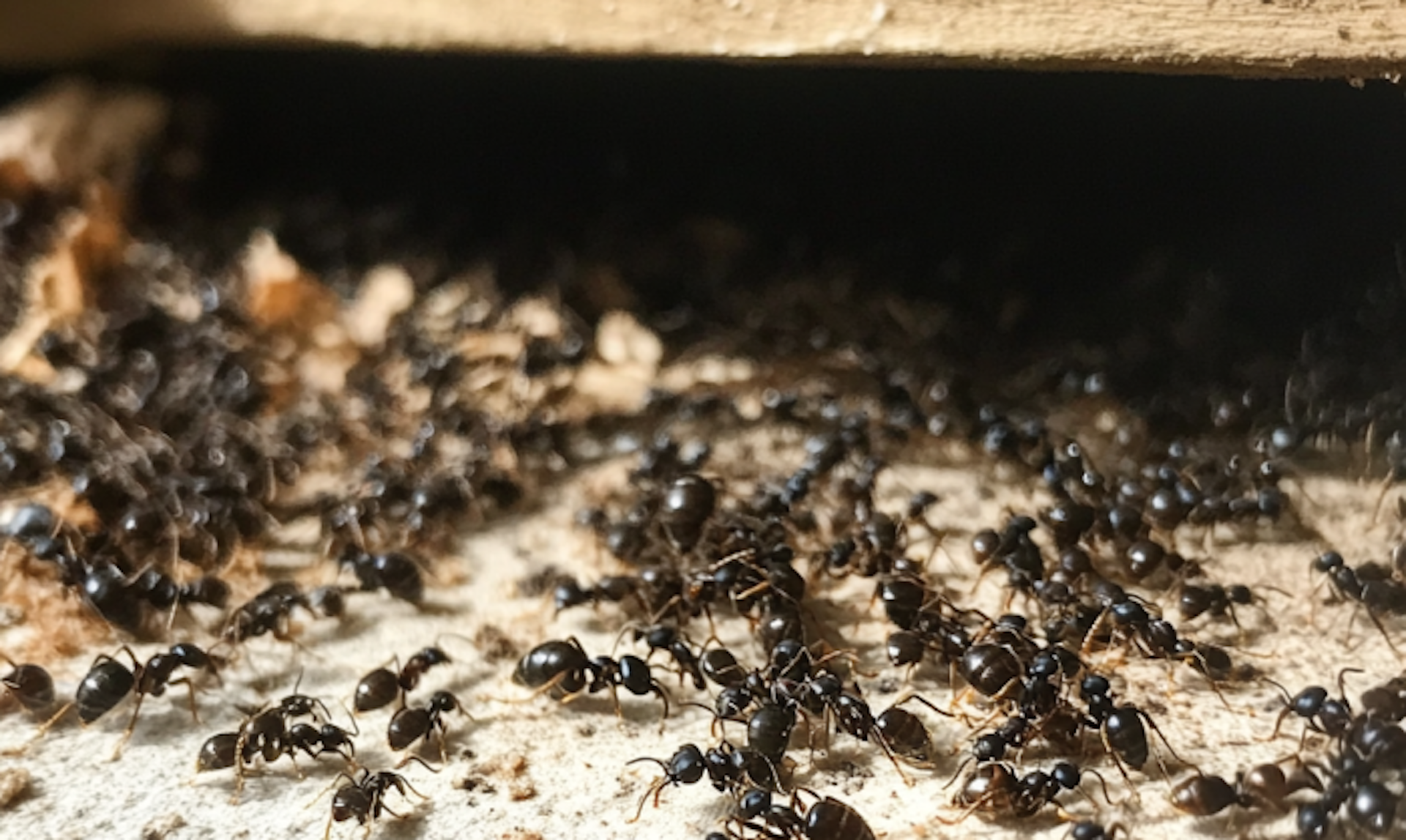When you think of the word “pest,” ants may not be the first to come to mind. While seeing ants is practically a normal part of everyday life, and these tiny bugs may seem innocuous, they can quickly multiply and become a headache for Maryland homeowners if not dealt with immediately.
In the most extreme cases, ants can damage property and even cause painful bites. With well over dozens of ants in Maryland, it can be difficult to tell what species you are dealing with and what the right methods for removal are.
One clue that can give us a better idea of how to handle ants in Maryland is to differentiate between an outdoor and indoor infestation, as applying the right treatments can help eliminate ants on your property altogether.
This guide will illustrate the differences between indoor and outdoor ants in Maryland, including their behavior and how to get rid of them.
What’s the Difference Between Indoor and Outdoor Ants?
Indoor and outdoor ants differ significantly in behavior and what attracts them to your property. Indoor ants, such as pharaoh ants and odorous house ants, are often attracted to food sources like sweets, grease, and moisture, making nests inside walls, under floors, or in hidden crevices. These ants can spread disease and contaminate food, making them a priority to remove.
Outdoor ants, on the other hand, typically nest in soil, under rocks, or in decaying wood. Some common species include fire ants, carpenter ants, and pavement ants. While these ants can be innocuous, species like carpenter ants can wreak havoc on wooden furniture and fire ants (though rarer in Maryland) can harm children and pets.
Common Indoor Ant Species
Some of the most common ants you may see inside your home include:
- Odorous house ants
- Sugar ants
- Acrobat ants
- Pavement ants
- Pharaoh ants
- Carpenter ants
- Argentine ants
- Tiny black ants
Common Outdoor Ant Species
- Carpenter ants
- Pavement ants
- Fire ants
- Field ants
- Thief ants
In many cases, outdoor ants can make their way inside, making them extra difficult for homeowners.
Tips to Get Rid of Indoor Ants
Getting rid of ants can seem extremely difficult, as these pests are so tiny that they can go undetected for a while before you notice them. They also seem to reappear just as quickly as they are killed, but there are several things you can do to get rid of them:
- Seal entry points in your home
- Properly seal and store all food and drinks
- Avoid having dirty dishes in the sink
- Remove trash bags from your home regularly
- Sweep and mop your floors regularly
- Use store-bought or homemade ant baits and traps
Tips to Get Rid of Outdoor Ants
One way to get rid of ants inside your home is to get rid of ants outside your home before they even cross that barrier. Pest Czar’s home protection plans feature organic barrier sprays that help keep ants and various other pests away from your property, so you don’t have to worry about ever dealing with them.
However, if you already have a lot of ants hills or ants outside, there are some DIY tips you can try to get rid of them.
- Sprinkle diatomaceous earth where you have seen ants
- Pour boiling water on anthills
- Use a mixture of vinegar and water to kill them
- Sprinkle cinnamon on ant paths and anthills
Landscaping is also a very important part of ongoing prevention, as mowing your lawn will disturb ant habitats and force them to move before they can establish a home.
When to Call an Exterminator
Whenever you find yourself dealing with an infestation of any kind, it is always in your best interest to contact an ant control professional immediately. An ant infestation is no exception, whether it is inside your house or outside in your yard. An experienced and trusted exterminator will let you know what type of ants are present in or around your home and target the colony to kill the ants once and for all.
FAQs
How do weather conditions affect indoor and outdoor ant infestations?
Rain can flood ant colonies, causing these pests to seek shelter in homes and buildings. Extreme droughts can also force ants to enter your home, as the lack of water can affect their food supply. If there are heavy winds, ants can even be blown away and carried to different areas, leading to infestations in the places they end up.
What are the common entry points ants use to move from outdoors to indoors?
Since ants are so tiny, they can enter your home through the smallest entry points. Cracks and crevices in your home’s foundation or walls are common entry points for these pests, as well as doors and windows that have been left open.
What signs indicate that an outdoor ant problem is spreading indoors?
One of the biggest indicators that an outdoor ant infestation is moving into your home is if you notice ants marching toward your home in an intentional manner or observe them gathering around the outside of your home.


